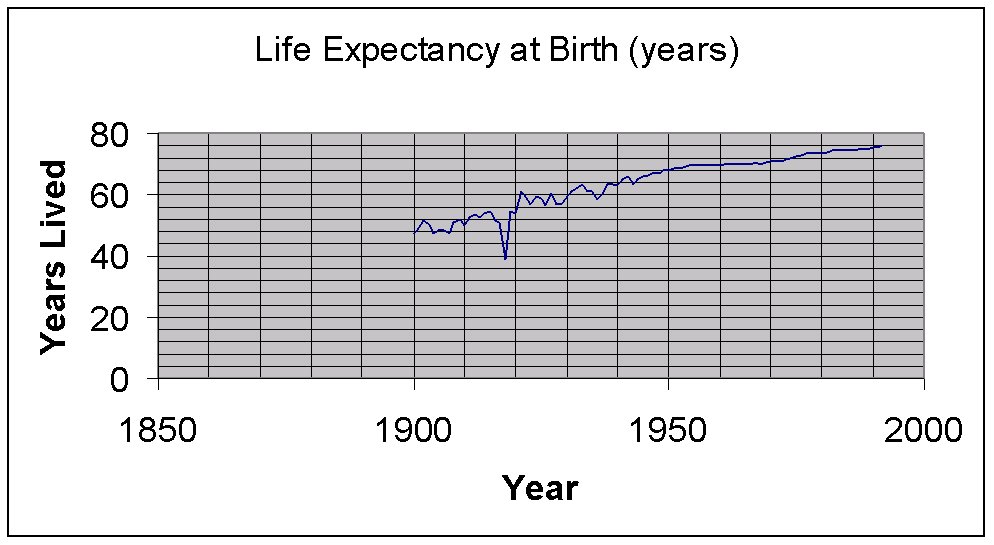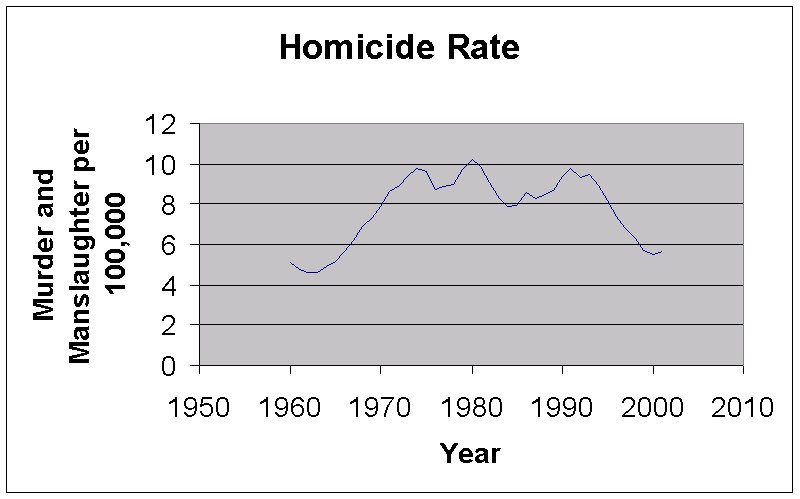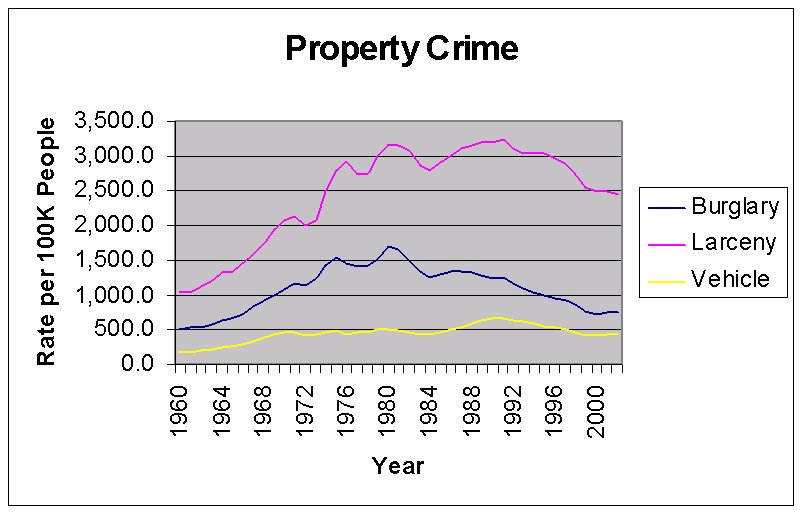October 15, 2004
A World Safe and Secure
During Wednesday evening's debate in Tempe, Arizona, the two presidential candidates were asked the following question by moderator Bob Schieffer:
"Will our children and grandchildren live in a world as safe and secure as the one in which we grew up?”
The correct answer to this question is:
Yes, the world will be 10.33% safer for our children.
Here's how I know this. In 1960 the life expectancy at birth was 69.7 years. In the year 2000 it was 76.9 years. See http://www.moralityindex.com/6.html#Data%20Sources for the entire data table. I was born in 1960, and my children's birth years average about 2000. We calculate
((76.9 / 69.7) - 1) * 100 = 10.33%
So our children will likely be about 10% safer from premature death. The ever-increasing life expectancy graph sailed right on up through September 11, 2001 with nary a blip. (I leave it as an exercise for the reader to figure out why there was a huge drop in life expectancy during the First World War and not during the Second.)

If you personally want to be safe, wear your seat belt and don't smoke. Everything else is worry.
You are also a lot safer now from getting murdered than you were in 1990. (Note:The crime statistics are not valid before about 1980 because of missing data, so you should ignore those years.)

In fact, you are safer from property crime, too, compared to about 15 years ago:

Warning: There is a false ramp-up in these graphs during the early years! The data comes from the FBI Uniform Crime Reports, which have gradually increased the number of reporting agencies over the years. But that dramatic drop you see in crime during the Clinton era is very real. You can swipe the data tables from http://www.moralityindex.com/crime.html and graph them yourself if you want.
The point is not that we can calculate our relative safety to three significant digits. The point here is that questions of safety and danger can be determined by reliable statistics, not by someone's feeling on a certain day with regard to how safe we are.
Bob Schieffer and others have this rosy glow about the "good old days", and how safe and wonderful things were back then. Sure, I walked to school when I was a kid and never worried about someone snatching me. But my brother got hit by a car on his bicycle and ended up in the hospital with a concussion and a broken leg. Of course he was not wearing a helmet - nobody did in 1966! Now my children and I do not get on our bicycles without a helmet. We have to wear seatbelts in the car or get a fine. On a global level, I was growing up during the Cuban Missile Crisis. People were building bomb shelters and we were close to global thermonuclear war. That doesn't sound very safe and secure to me.
The numbers show that we are living longer and safer. If politicians want to make intelligent public policy, they should look at the numbers and not rely on some around-the-water-cooler analysis.
I'm sure that terrorism has increased, and global leaders are rightly concerned about it. "On December 31, 1964 a squad of Palestinian guerillas crossed from Lebanon into northern Israel. ... their target: a pump for conveying Galilee water to the Negev." The operation failed, but al-Fatah leader Yasser Arafat extolled their service in the cause of Jihad (book: "Six Days of War, June 1967 and the Making of the Modern Middle East", by Micheal B. Oren, 2002, page 1).
Nowadays the terrorists don't attack water pumps, they fly airplanes into office buildings. Arafat has morphed from a terrorist leader into an ineffectual national leader who issues perfunctory condemnations whenever his countrymen blow up civilian buses in Israel. Other scum like al-Zarqawi have taken over the headlines. Yes, terrorism has changed over the years.
But we're still safer on the whole.
Posted by Carl Drews at October 15, 2004 5:35 PM | Culture